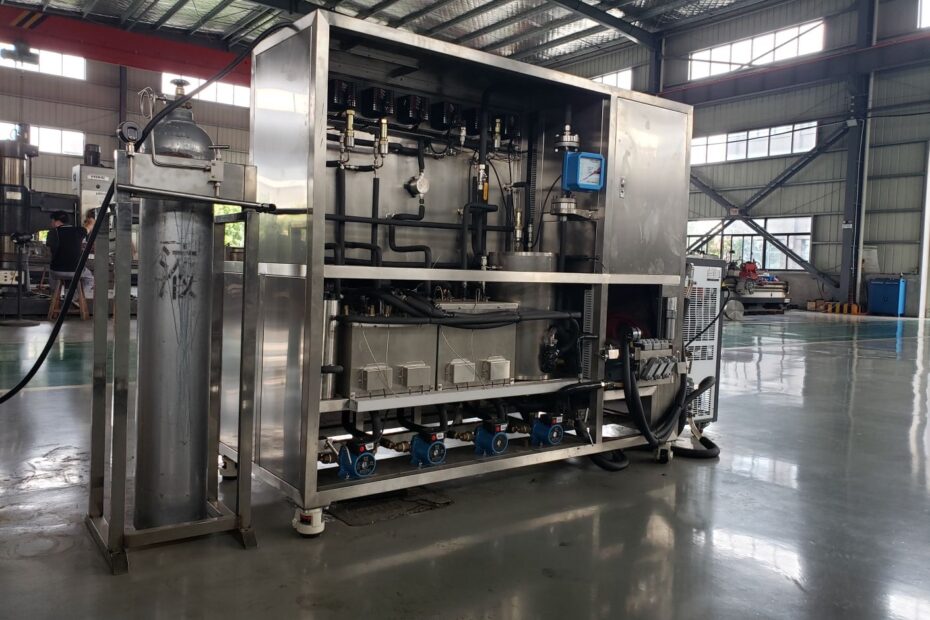In the ever-evolving landscape of extraction techniques, two prominent methods stand out: Supercritical CO2 Extraction and Traditional Extraction Methods. This article aims to dissect the benefits offered by each approach, shedding light on their unique strengths and applications in various industries.
Supercritical CO2 Extraction
Operating Principles
Supercritical CO2 extraction involves the use of carbon dioxide in a state that combines properties of both a liquid and a gas. This state, known as supercritical, occurs at specific temperature and pressure conditions. In the extraction process, supercritical CO2 acts as a solvent, selectively extracting desired compounds from raw materials such as plants.
Advantages
- Selective Extraction:Supercritical CO2 extraction allows for the selective extraction of target compounds. The tunable parameters of temperature and pressure enable precise control, ensuring that only the desired components are extracted, leaving unwanted substances behind.
- Reduced Thermal Degradation:The low temperatures involved in supercritical CO2 extraction minimize the risk of thermal degradation of heat-sensitive compounds. This is particularly beneficial for preserving the integrity of delicate molecules in botanical extracts, essential oils, and other temperature-sensitive substances.
- Environmental Friendliness:Carbon dioxide is a readily available and non-toxic solvent, making supercritical CO2 extraction environmentally friendly. The process eliminates the need for harsh chemicals, reducing the environmental impact associated with traditional solvent-based methods.
Top 4 Applications of Supercritical CO2 Extraction
| Industry | Application |
|---|---|
| Pharmaceuticals | Extraction of active pharmaceutical ingredients (APIs) |
| Food and Beverage | Extraction of flavors, essential oils, and colorants |
| Cannabis Industry | Extraction of cannabinoids and terpenes |
| Herbal and Botanicals | Extraction of plant compounds for medicinal formulations |
Traditional Extraction Methods
Traditional extraction methods encompass a diverse range of techniques, including solvent extraction, steam distillation, and cold pressing. Each method has its unique set of advantages and is chosen based on the nature of the raw material and the desired end product.
Advantages
- Cost-Effectiveness:Traditional extraction methods are often more cost-effective in terms of equipment and operational costs. This makes them accessible to a wide range of industries, especially smaller-scale operations with budget constraints.
- Wide Applicability:Traditional methods are versatile and can be applied to various raw materials. From extracting essential oils from plants to obtaining vegetable oils from seeds, traditional methods offer flexibility in processing different types of materials.
- Established Practices:Many traditional extraction methods have been used for centuries and are deeply rooted in traditional practices. This long history signifies a wealth of accumulated knowledge and expertise, contributing to their continued relevance in certain industries.
Considerations for Traditional Extraction Methods
- Solvent Choice: The choice of solvent in traditional methods is crucial and may impact the safety and quality of the extracted substances.
- Temperature Sensitivity: Some traditional methods involve higher temperatures, which can lead to thermal degradation of sensitive compounds.
Comparative Analysis of Supercritical CO2 and Traditional Methods
| Aspect | Supercritical CO2 Extraction | Traditional Extraction Methods |
|---|---|---|
| Selectivity | Highly selective, allowing precision in compound extraction | Selectivity varies based on the method used |
| Temperature Control | Low-temperature process, minimizing thermal degradation | Temperature can vary, impacting the integrity of compounds |
| Environmental Impact | Environmentally friendly, utilizing non-toxic CO2 | May involve the use of solvents, impacting environmental sustainability |
| Cost | Higher initial investment, but cost-effective in the long run | Generally more cost-effective in terms of equipment and operational costs |
| Versatility | Applicable to a wide range of industries and substances | Versatile, with specific methods tailored to different materials |
| Historical Significance | A relatively newer method with a growing body of research | Deeply rooted in traditional practices, with centuries of historical use |
Conclusion
In conclusion, the choice between Supercritical CO2 Extraction and Traditional Extraction Methods hinges on the specific needs of the industry and the characteristics of the raw materials being processed. Supercritical CO2 extraction excels in precision and environmental sustainability, particularly in industries requiring selective extraction and minimal thermal degradation. On the other hand, traditional methods offer cost-effectiveness and a rich historical legacy, making them well-suited for a variety of applications. As technology advances and industries evolve, the synergy between these extraction methods continues to shape the landscape of natural product extraction.

